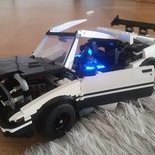
[WIP] Frontliner - off-road vehicle powered by brushless motor and RC setup
By
Krxlion, in LEGO Technic, Mindstorms, Model Team and Scale Modeling
-
Recently Browsing 0 members
No registered users viewing this page.
